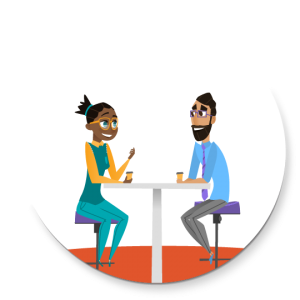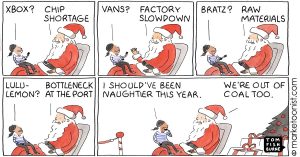Given the recent release of the documentary series The Last Dance, I found this example to be more prevalent than ever. Basketball great Michael Jordan once famously stated that he had missed more than 9,000 shots, lost 300 games and missed 26 game-winning shots in his career. Following that statistical analysis of his own mistakes, he said, “I’ve failed over and over. And that is why I succeed.”
Outside of the sports world, another famous quote similar to this in the business and innovation world was said by Thomas Edison: “I have not failed 1,000 times. I have successfully discovered 1,000 ways to NOT make a light bulb.” What he was touching on was perseverance and persistence.
These two famous quotes are integral to my powerful strategy: Fail Fast to Learn Faster; a central principle of my Anticipatory Organization Learning System. If you’re not failing, you’re not pursuing innovation, but when you do fail, rebound quickly and start all over again.
Many Failures, One Success
Here’s a statistic that really brings home the interrelationship between failure and innovation—and further, the value of learning to fail quickly. Studies have shown it can take upwards of 3,000 ideas to produce one product or service that goes on to be a commercial success.
That brings to light not only the essential value of repeated failure to obtain a successful outcome, but also the benefits of failing quickly. For one thing, failing fast allows you to move on from that missed shot or lost match that much sooner. You can then get to the next effort, which will, hopefully, yield better results.
But with that said, it is important to note that failing fast is more of a mentality than a physical obstacle to overcome. Mentally moving on from a failure is what really saves you from needlessly expending energy and resources on ideas and concepts that certainly don’t warrant loyalty.
Fired as an Owner: A Case Study in Fast Failure
Here’s another example that many of us are familiar with. From our iPads to our iPhones, the Apple devices we all know and love are all products of the vision that the late entrepreneur Steve Jobs brought to light with his often abrasive leadership and meticulous attention to detail with his team of engineers and creatives alike.
Yet, prior to his passing in 2011 and documentaries about him that followed, many born into the technology boom we are currently accustomed to do not recall when Jobs was fired from his own company. This was devastating to him and simultaneously played out on a nationwide scale as being the biggest failure imaginable.
However, Jobs failed fast, dusted himself off, and went on to found Pixar, a revolutionary animation company mainstay in one of the biggest entertainment companies in the world: Disney. This success led him to return to Apple, where he spent the remaining years of his life helping rebuild the failure it had become after he had left.
Jobs is quoted as saying, “I didn’t see it then, but it turned out that getting fired from Apple was the best thing that could have ever happened to me,” a profound testament to my Fail Fast/Learn Faster principle.
The Man Behind The Mouse: A Successful Case Study
Steve Jobs bringing Pixar to the success it has become would not be the same without its parent company mentioned above being Disney, nor would Disney exist without the man it is named after: Walt Disney.
Despite the mega corporation it has become, the very founding of Mickey Mouse, Donald Duck and several other beloved entertainment icons that are known so well to us today came from a string of fast failures by the man himself.
Walt Disney not only dropped out of high school to join the Army, where he failed almost immediately, he was actually fired from his job as an illustrator for a Missouri newspaper for “not being creative enough.” Having nowhere else to turn, he founded Disney Studios by following his heart, drawing that lovable mouse that generations upon generations will continue to grow up with, and even long after his passing, his creation has become an icon not soon to be forgotten.
In his own words, Disney has said, “We don’t look backwards for very long. We keep moving forward, opening up new doors, and doing new things, because we’re curious… and curiosity keeps leading us down new paths.”
The next time you’re confronted with a new idea, product, service or anything that just doesn’t seem to be working out, ask yourself: Would I be better off failing, learning from the experience as quickly as possible and then moving forward? The answer is a resounding yes.
If you’re ready to see the future and plan with greater confidence, you can order my latest bestseller, The Anticipatory Organization, and learn how you can implement my Fail Fast/Learn Faster principle and many others to steer your business toward success by way of anticipation today!
Originally published here.
Business & Finance Articles on Business 2 Community
(22)
Report Post



